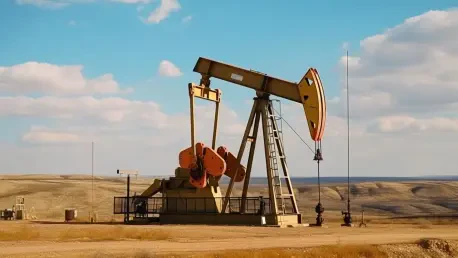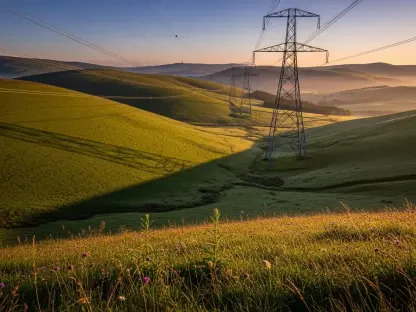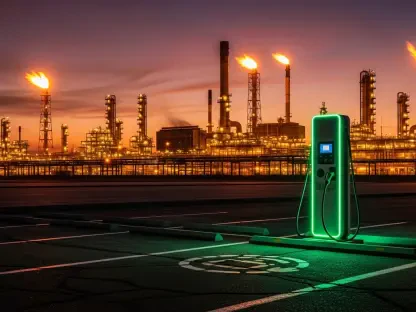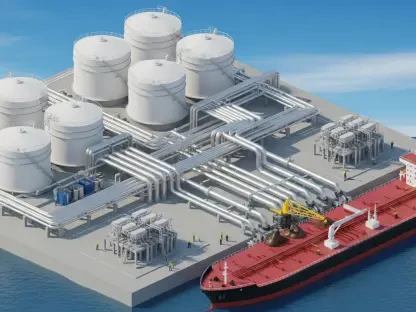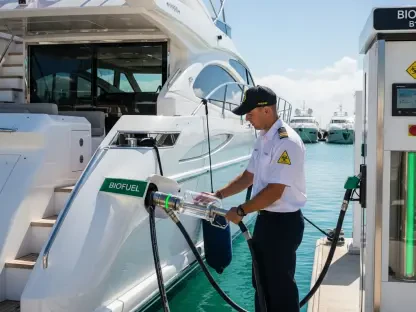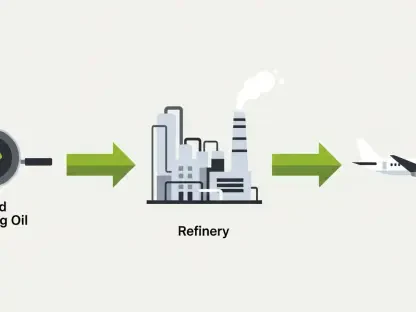In the realm of energy management and utility expertise, Christopher Hailstone stands out for his in-depth knowledge of grid reliability and security. Today, we delve into a pressing issue for energy giant Chevron, focusing on the safety concerns that have arisen in the wake of recent incidents, including a tragic fire on an offshore platform in Angola.
What were the specific safety concerns that led to the internal video warning about near-misses at Chevron?
The main concerns centered around a noticeable rise in serious near-misses, incidents that could have easily escalated into fatal accidents. These near-misses were not isolated to specific operations but spanned across various parts of Chevron’s business, indicating a systemic issue that needed urgent attention. The internal video served as a means to alert employees to the gravity of the situation and the need for immediate action to prevent potential catastrophes.
Could you elaborate on the “concerning increase in serious near-misses” mentioned in Mike Wirth’s video?
Mike Wirth outlined that this increase involved near-misses during routine tasks, which are particularly troubling because they signify potential weaknesses in everyday protocols. These close calls were essentially warnings, highlighting areas where existing safety measures might not be sufficient or properly followed, pointing to a need for a cultural reinforcement of safety priorities.
How did Chevron’s decision to lay off up to 20% of its workforce at the start of the year affect safety protocols and procedures?
The layoffs certainly put additional pressure on remaining staff, who were required to maintain operational efficiencies despite reduced numbers. This restructuring likely stretched resources thin, increasing the workload and possibly leading to oversight in safety procedures. The balance between cutting costs and maintaining safety standards became more precarious, stressing the importance of thorough safety protocols adapted to the new workforce structure.
What specific measures has Chevron taken to reinforce safety standards since the increase in near-misses was identified?
Chevron has implemented safety stand-downs, allowing teams to pause production and engage in comprehensive safety discussions. These meetings focus on fostering communication, understanding risk, and reinforcing proper planning to ensure every team member comprehends the necessary skill sets and safety measures required. This approach aims not only to prevent incidents but also to cultivate a safety-first mindset across all operations.
How does the company balance the need to cut costs with the need to ensure safety across its operations?
Chevron emphasizes that while cost-cutting is essential, safety cannot be compromised. This balance is managed by integrating stringent safety protocols that are continuously reviewed and updated to address any new challenges that arise from operational changes. By investing in safety training and communication, the company strives to maintain high safety standards even amid financial constraints.
What are safety stand-downs and how do they help improve safety at Chevron?
Safety stand-downs are strategic pauses in operation where employees collectively discuss current safety practices, share concerns, and explore ways to mitigate risks. These sessions are critical, as they serve as forums for employees to voice concerns without fear, and for the company to reaffirm its commitment to safety as a top priority. It’s an empowering process that encourages transparency and accountability.
What specific challenges do employees face when it comes to speaking up about safety concerns, as noted by Mike Wirth?
The biggest challenge is the perceived risk of repercussions. In a climate of job cuts, some employees might feel that speaking up could jeopardize their positions. Despite reassurances from leadership, the fear of being misunderstood or sidelined can deter individuals from raising legitimate safety concerns, underscoring the need for a culture that truly values and protects whistle-blowers.
Can you share any initial findings from the investigation into the fire on the deepwater platform off Angola’s coast?
While the investigation is still ongoing, early observations suggest that procedural lapses might have contributed to the severity of the fire. An analysis of equipment maintenance records and emergency response actions are central to understanding what might have gone wrong. It’s crucial that these findings lead to actionable changes in policies and procedures to prevent recurrence.
How does the Angola incident fit into the overall safety record of the company over the past year?
The Angola incident, while tragic, is part of a troubling pattern of safety challenges over the past year. Despite previous efforts to address safety following minor incidents, it highlights gaps in Chevron’s safety practices that must be urgently addressed. This incident serves as a somber reminder and catalyst for intensified efforts toward exhaustive safety audits and improvements.
What is Chevron’s process for restarting work after a safety incident has been addressed?
Restarting operations follows a rigorous process that involves a thorough investigation of the incident, reassessment of safety protocols, and implementation of necessary corrective actions. Only after all parties are satisfied that risk factors have been mitigated, are activities gradually resumed. This ensures that all learnings from the incident are integrated into future operations.
What kind of support is provided to workers injured in the Angola fire, and how is their recovery being managed?
Injured workers receive comprehensive medical care and rehabilitation support tailored to their injuries. Chevron is committed to ensuring these workers are not only recovering physically but are also supported mentally and financially during their recovery period. An ongoing dialogue with health professionals ensures a recovery plan that facilitates a safe and informed return to work, when possible.
How does Chevron ensure that safety is prioritized above production in its daily operations?
By embedding safety into its operational culture, Chevron makes safety protocols a non-negotiable part of its daily routine. Regular safety meetings, transparent reporting systems, and leadership that consistently demonstrates a commitment to safety help reinforce this priority. Moreover, production stops like safety stand-downs exemplify the company’s commitment to putting safety before business goals.
What changes might Chevron consider to its safety practices in light of recent incidents?
Chevron is likely to enhance training programs, emphasize leadership accountability, and make technological upgrades that enable better monitoring and risk assessment in real-time. Developing a more robust incident response infrastructure and engaging employees at every level to participate in safety discourse are crucial steps. Continuous adaptation of best practices from industry benchmarks will also play a vital role.
Can you explain the role of safety meetings, like the one mentioned by Marissa Badenhorst, in reinforcing a safety culture at Chevron?
Safety meetings are foundational to Chevron’s efforts to foster a proactive safety culture. These gatherings provide a platform for comprehensive review of safety practices, sharing lessons learned from past incidents, and setting action items for risk reduction. They encourage open dialogue, enabling employees at all levels to collaboratively work towards a safer working environment by constantly iterating on existing processes.
How does Chevron plan to prevent similar incidents in the future throughout its global operations?
To prevent future incidents, Chevron is adopting an integrated approach that combines state-of-the-art technology, ongoing staff training, and enhanced safety protocols. The company plans to invest in predictive analytics to foresee potential hazards and increase collaboration with global safety experts to implement cutting-edge safety measures universally. Continuous education and engagement with personnel will ensure that safety remains the cornerstone of operations worldwide.
Do you have any advice for our readers?
In any industry, maintaining a balance between efficiency and safety is paramount. It’s crucial to foster an environment where safety is a collective responsibility, and every team member feels empowered to voice concerns without fear. Continuous learning and adaptation are key to navigating today’s complex operational challenges, ensuring that safety protocols evolve to meet new demands and technologies.
